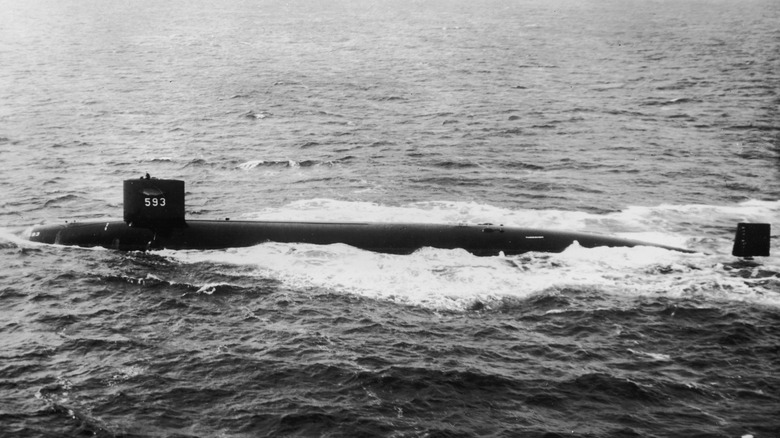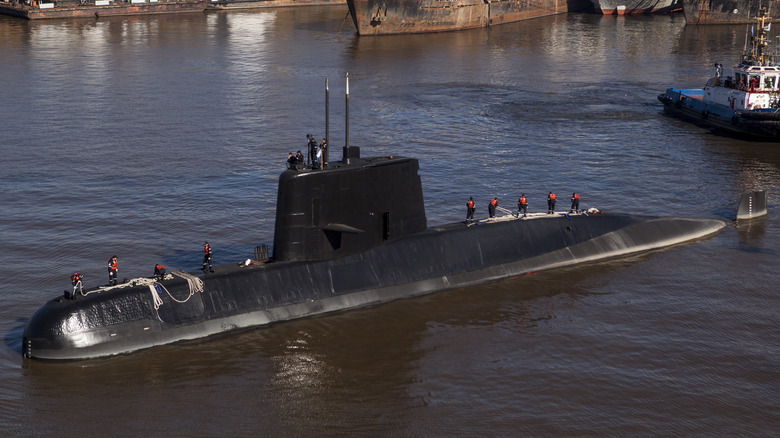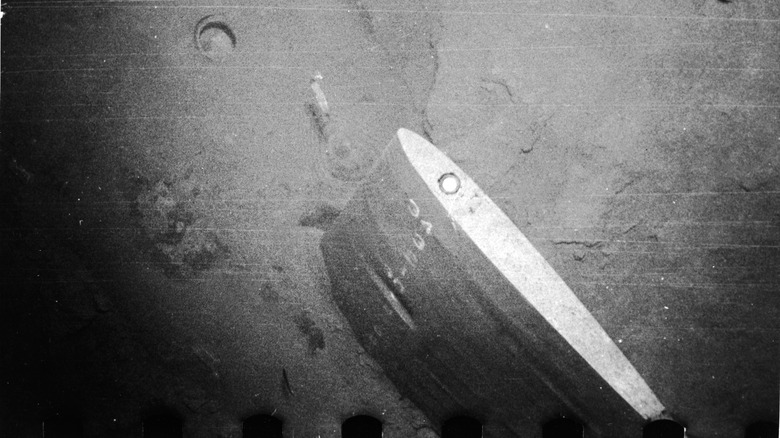

What Really Happened When These 4 Vehicles Imploded
source link: https://www.slashgear.com/1330377/what-happens-when-vehicles-implode/
Go to the source link to view the article. You can view the picture content, updated content and better typesetting reading experience. If the link is broken, please click the button below to view the snapshot at that time.
What Really Happened When These 4 Vehicles Imploded

Following the loss of the Titan submersible, vehicular implosion is being talked about a lot. While what happened to the Titan is a risk that is constantly on the minds of engineers and submarine crews, it is actually a fairly rare occurrence. Below, we're going to look at four incidents which resulted in a vessel imploding. Three involved submarines, and one actually happened above sea level.
If something goes wrong structurally on most submarines, there is a good chance it ultimately implodes. Few submarines have the kind of operating depth that would allow them to safely reach the bottom of most of the world's oceans. A loss of power, parts failure, or severe damage may cause it to sink to its crush depth. If a submarine hits this depth, and hasn't already filled with water, it will then implode.
The exception occurs when a sub is actually capable of operating at the same depth, or at a greater depth, than the sea bed. In these cases, the submarine is likely to rest on the sea bed, giving any surviving crew members a chance of rescue. Above ground, the same principle applies. A pressure differential outside of a vessel's operating limits will either cause it to burst if the internal pressure is greater, or implode if the outside pressure is greater.
That said, implosion isn't as constant a risk, and the pressures involved aren't as high.
A butadiene tanker car in cold weather
An example of an above-sea-level implosion happened in France back in 2010. A non-degassed butadiene tanker car was in a rail yard on an unusually cold night. The air temperature hit -17C (1.4F), which was enough to cause the butadiene in the tanker to liquify. The liquefaction resulted in a pressure drop of 0.35 BAR (5 PSI), which was beyond the operating tolerances of the tanker.
As a result, the outside air pressure — which is 1 BAR (14.7 PSI) at sea level — caused the tanker to implode. While a difference of 5 PSI doesn't seem like a lot, especially when compared to the tons per square inch that caused the Titan submersible to implode, it was still more than the tanker car was designed to tolerate.
No injuries were reported from the implosion, and the yard's staff were kept at a distance until the gas was transferred from the tanker and the area was made safe. There was a financial impact, with the costs of the implosion estimated at €200,000 ($218,000). This wasn't the first time this had happened either.
Similar incidents which occurred following very cold nights in the 1970s led to recommendations that the internal pressure of such tanks be kept at 2 BAR (29.4 PSI) during winter months. While this is significantly greater than the pressure difference that crushed the tanker, it also demonstrates there is a big engineering difference between keeping pressure out and keeping it contained.
ARA San Juan (S-42)

ARA San Juan (S-42) went missing on November 15, 2017. A year and a day later, on November 16, 2018, the Argentinian Navy reported that the imploded remains of the vessel had been discovered on the sea bed 290 miles southeast of Comodoro Rivadavia, and almost 3,000 feet below sea level.
What exactly caused the San Juan to sink to the point where it imploded is still a mystery, and we may never know the exact reason the submarine was lost. The sub disappeared during a naval exercise that the Argentinian Navy was holding. The most credible current theory blames an "operational error" regarding a ventilation valve for the sub's loss. It also had a little to do with the sub's propulsion systems.
Diesel-electric subs, like the San Juan, work a little like hybrid cars. A diesel engine charges a large battery bank and propels the sub at or near the surface. Because engines need air, and produce gases that need to be exhausted, the engine can only be used when the sub is surfaced, or just below the surface if a snorkel is used. The batteries the engine charges can be used to power the sub when it dives.
Water may have leaked in through the sub's valve, causing its batteries to short circuit. This would produce hydrogen gas, and would have also caused the sub to lose power. All 44 crewmembers died in the incident.
USS Thresher and USS Scorpion

The USS Thresher met its tragic end on April 10, 1963, off the coast of Maine. At the time of its disappearance, it was engaging in sea trials that involved diving to its maximum depth of 1,300 feet. During these trials the submarine regularly communicated with the nearby USS Skylark.
When those communications stopped, shortly after 9 a.m., it was clear that a major problem had occurred. The U.S. Navy launched a weeks-long search and investigation into what happened to one of its most technologically advanced submarines. Debris from the sub was eventually discovered 8,400 feet down, on the ocean bed, on June 27.
It was eventually concluded that a leak, caused by insecure joints, resulted in flooding — which in turn caused the reactor and other vital systems to shut down. Without power, the USS Thresher began to uncontrollably descend. At some point below its 1,300-foot operating depth, the submarine will have hit its crush depth. Hitting this depth results in the catastrophic failure of the hull due to implosion.
All 129 men on board the submarine were killed. The USS Thresher remains one of only two U.S. nuclear submarines that the Navy has lost in its history. The other, the USS Scorpion, also ultimately imploded — though it isn't certain that implosion caused its loss. Over the years, several theories have been put forward, including everything from a torpedo malfunction to a Soviet attack.
What happens when something implodes?
An implosion is the opposite of an explosion. Rather than a quick release of energy accompanied by rapidly expanding gases, you have pressure, squeezing a container and causing it to fail. Vehicles like submarines are built to keep extreme pressures out, and ensure the environment inside remains at a comfortable 14.7 PSI.
Unfortunately, there is only so much pressure a vessel can take. An extra atmosphere (14.7 PSI) of pressure is added every 33 feet you go down, and if a sub goes lower than it's meant too the pressure will be too much for it. At that point, the vehicle fails — usually catastrophically. It is crushed in a fraction of a second, and anyone unfortunate enough to be on board is killed instantly.
Implosions can also happen above the waterline, and occur for similar reasons — there is a pressure differential between the inside and outside of a container and said container isn't strong enough to fend off the external forces. If you sealed a container at high altitude, where air pressure is considerably lower, it may implode as it approaches sea level. You may have noticed this if you've closed a water bottle during a flight, and noticed it crush during the landing.
Heating a container also lowers the air pressure inside. If the container is sealed while hot and allowed to cool, it will implode if the pressure differential becomes too great.
Recommend
About Joyk
Aggregate valuable and interesting links.
Joyk means Joy of geeK